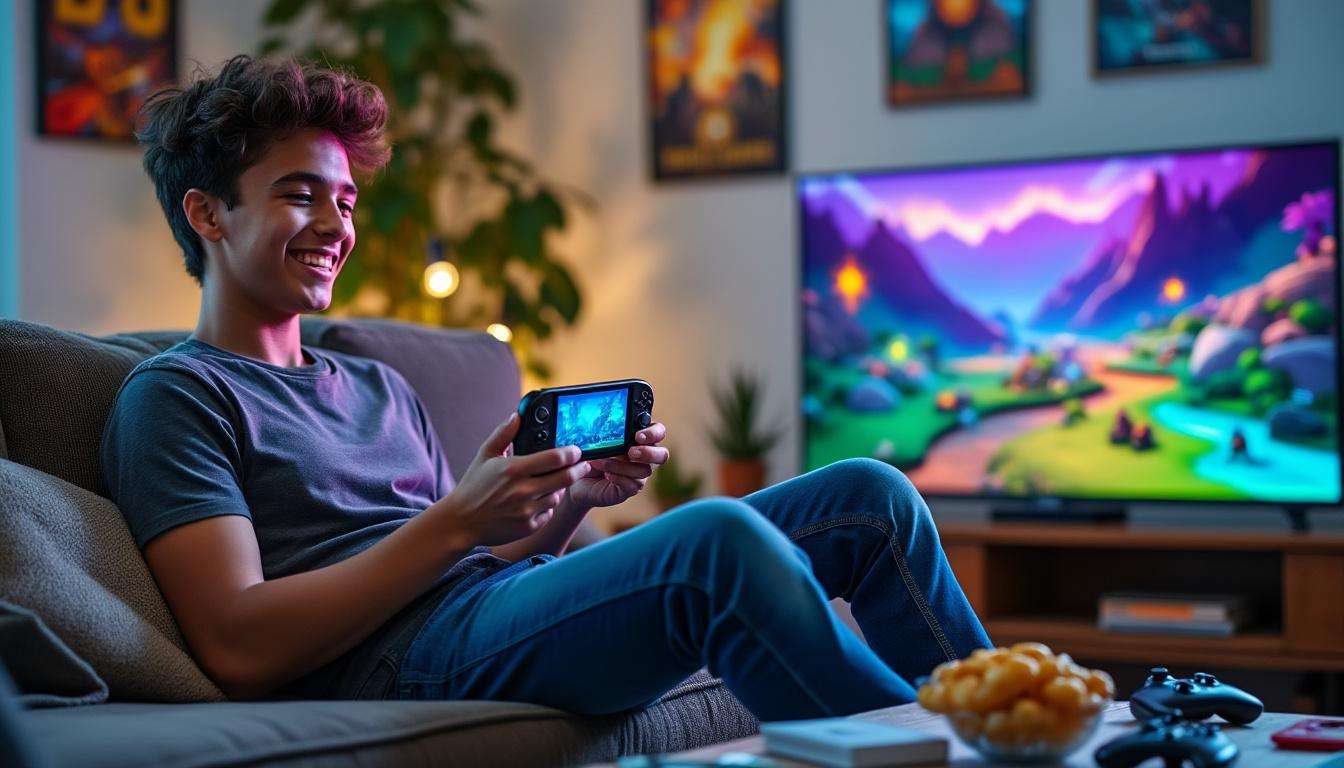The unveiling of the new Xbox Ally handheld marks a pivotal moment in gaming, blending the convenience of portability with the robust power of PC-level performance. Unlike traditional consoles limited to their proprietary game libraries, this Windows-based device shatters boundaries, seamlessly integrating titles from varied platforms such as Microsoft’s Xbox Game Pass, Steam, and Blizzard’s Battle.net. This evolution signals Microsoft’s strategic leap into handheld gaming, positioning the Ally as a versatile competitor against established players like Nintendo and Valve’s Steam Deck. As the gaming ecosystem expands in 2025, Xbox Ally offers a glimpse into a future where accessibility and flexibility reshape players’ expectations. From smooth Gears of War gameplay to the promise of running Windows-compatible titles across storefronts, Xbox Ally’s revealing demonstrates how handheld devices can no longer be viewed as mere companions to home consoles—they are fast becoming powerful, primary gaming machines in their own right.
Versatile Gaming Experience on the Xbox Ally Handheld
Microsoft’s Xbox Ally handheld diverges from the conventional by embracing Windows 11, enabling it to run a broad array of games beyond Xbox exclusives. This openness translates to a unified game library combining Xbox Game Pass, Steam, Ubisoft Connect, GoG, and Battle.net titles, promising gamers a plethora of options in a single device. During my hands-on session, Xbox Ally X ran Gears of War: Reloaded with impressive smoothness and responsiveness, emphasizing its controller-inspired ergonomics and crisp 1080p visuals.
- Windows-based system allowing expansive game compatibility
- Full-screen Xbox interface for intuitive navigation
- Access to multiple storefronts including Steam and Game Pass
- Cloud gaming and local Xbox remote play support
This openness is a stark contrast to PlayStation’s closed system, which restricts titles to its curated ecosystem, proving Microsoft’s ambition to foster a more inclusive gaming environment.Explore more on Xbox’s handheld ambitions here.
Technical Prowess and Device Design Compared to Rivals
The Xbox Ally and Ally X arrive with specifications that highlight Microsoft’s commitment to powerful performance without sacrificing battery efficiency. The base model sports an AMD Ryzen Z2 A processor, a 7-inch 1080p touchscreen, 16GB RAM, and a 512GB SSD, while the heavyweight Ally X impresses further, boasting the Ryzen AI Z2 Extreme, 24GB RAM, and a 1TB SSD. Although slightly heavier than the Nintendo Switch 2 and Valve’s Steam Deck OLED, the Ally’s design balances heft and ergonomics well.
- Ally: 670g weight, 60Wh battery, 16GB RAM
- Ally X: 715g weight, 80Wh battery, 24GB RAM
- Optimized Windows experience prioritizing gaming over desktop functions
- Expected better battery life compared to prior Windows handhelds
In collaboration with Asus and AMD, Microsoft ensures these handhelds deliver powerful, efficient gaming on the go, creating a competitive edge over devices like Nintendo Switch 2 and Steam Deck.Learn more about the AMD chips powering Xbox Ally.
The Strategic Implications of Xbox’s Handheld for the Gaming Market
Xbox Ally’s release arrives amid a transforming handheld market challenged by Nintendo’s hybrid Switch 2 and Valve’s Steam Deck models. Unlike these competitors, Microsoft’s device leans on the Windows ecosystem, amplifying game availability and flexible cross-platform features. This approach broadens Xbox’s gaming ecosystem beyond just console or PC, potentially attracting gamers who want a unified gaming experience.
- Integration with Microsoft’s Play Anywhere program, enabling cross-buy between Xbox and PC
- Full compatibility with cloud services and remote play with existing Xbox consoles
- Collaborative development with Asus for hardware design and performance optimization
- Firm stance on cross-storefront gaming access encourages broader industry adoption
This strategic partnership and the device’s capabilities hint at a future where handhelds are not mere second screens but powerful gaming platforms rivalling home consoles. Dive deeper into Microsoft’s next-gen console strategies and how handheld innovation fits.
Challenges and Opportunities Facing Xbox Ally in a Competitive Market
While Xbox Ally’s promise is impressive, its success depends on crucial factors like software optimization, pricing, and consumer acceptance. Industry analysts project growing demand for handheld gaming, yet the market remains niche compared to home consoles dominated by PlayStation and Nintendo. The Ally’s higher price point and weight could be barriers compared to the lightweight Switch, but it compensates with distinct advantages in game variety and computing power typical of Alienware or Razer gaming rigs.
- Potential high retail price, currently unannounced
- Device weight heavier than some competitors, yet offering superior hardware
- Market competition includes Nintendo’s strong foothold and Valve’s loyal Steam Deck user base
- Leverages Microsoft’s ecosystem connectivity, including steel-quality peripherals like SteelSeries and Corsair compatibility
The device also enters an environment where gamer loyalties are fragmented across giants like Nintendo, PlayStation, and Sega. Microsoft’s unique track record in PC gaming and partnerships with hardware leaders like Logitech and Alienware may tip the scales.Read about Xbox Ally as a handheld PC in detail.
